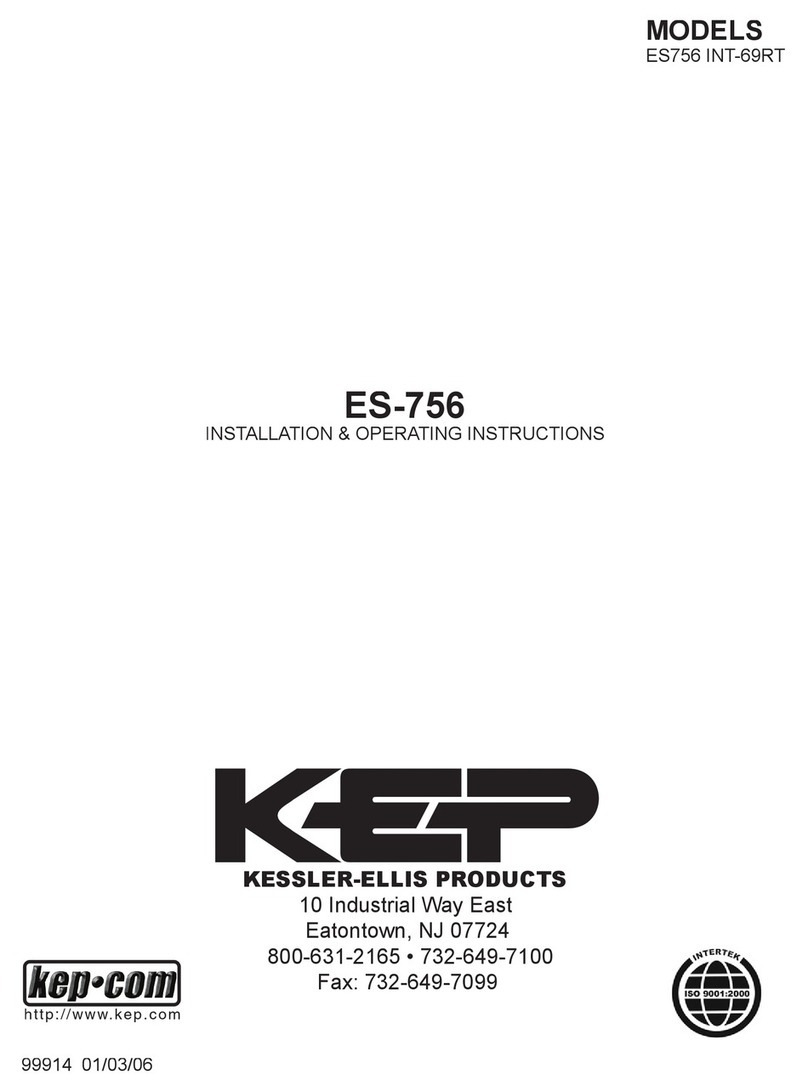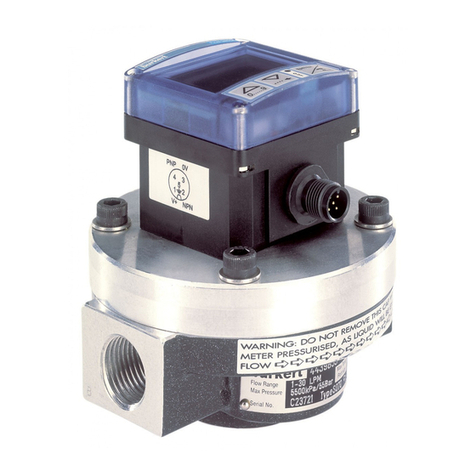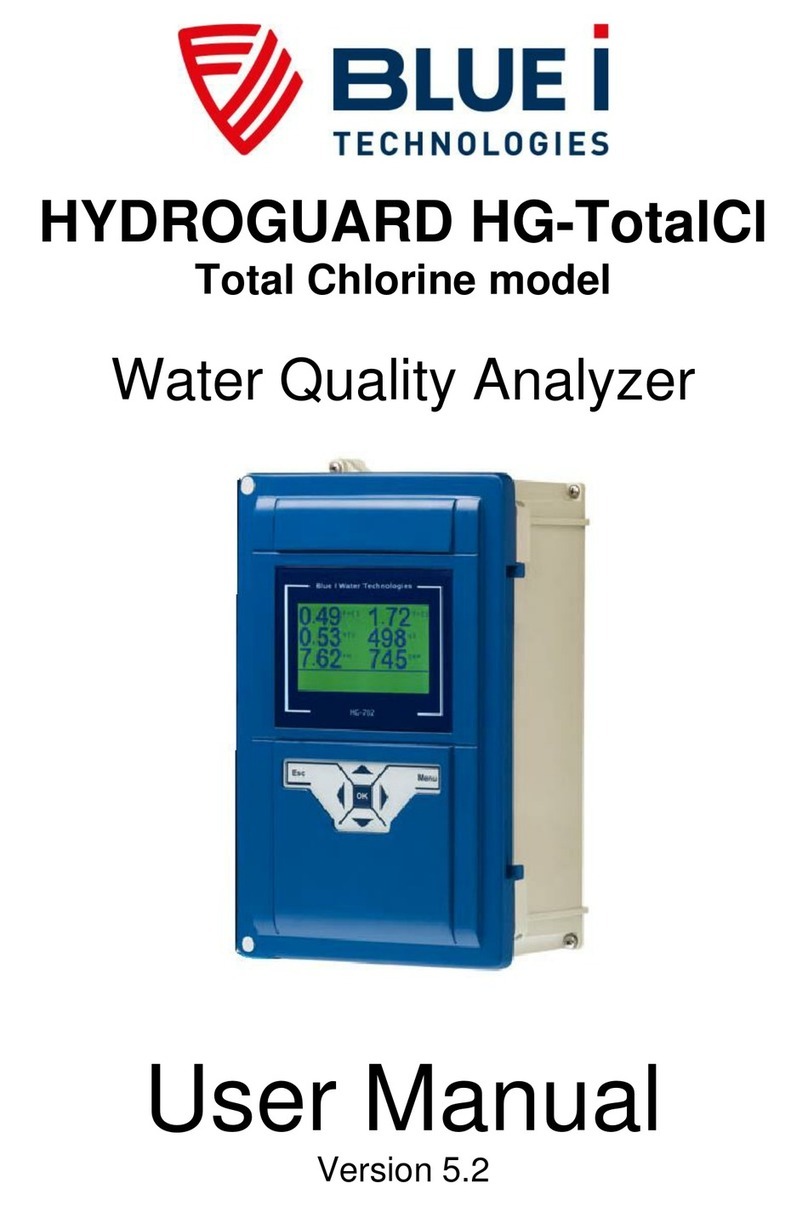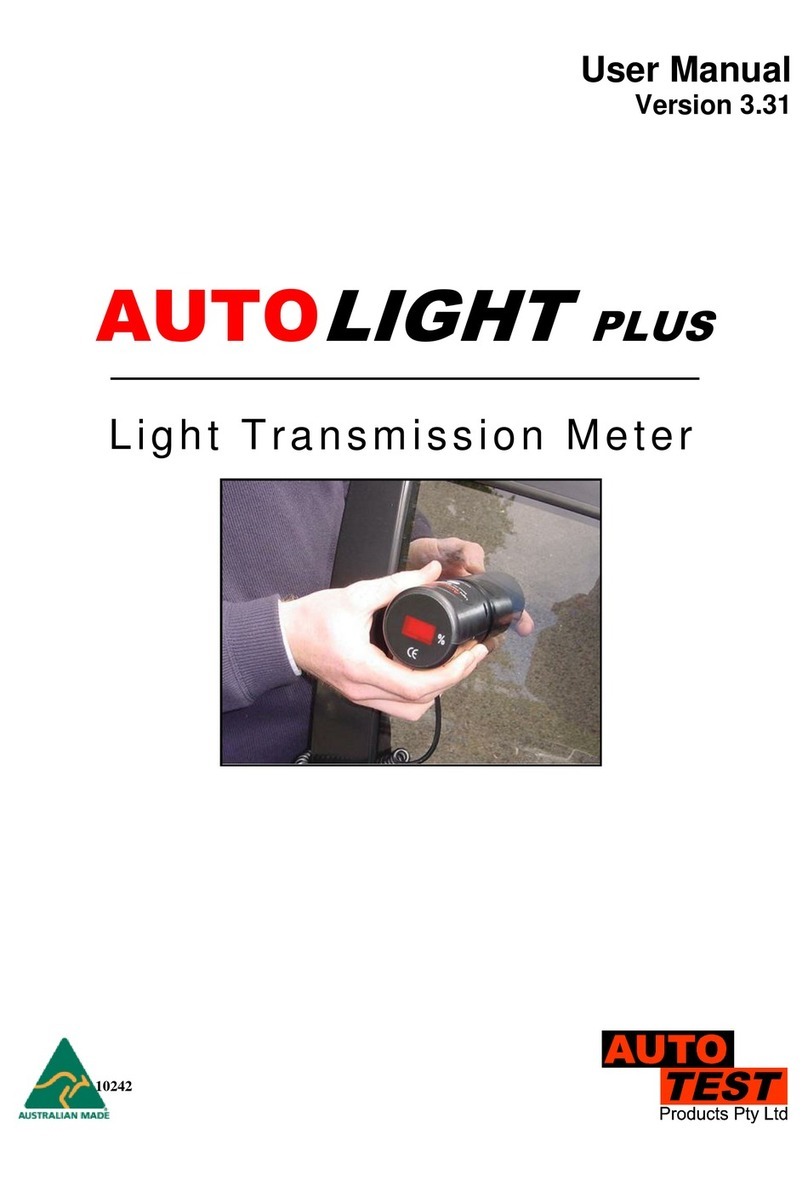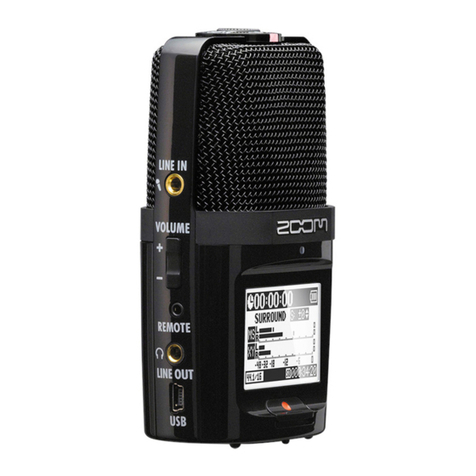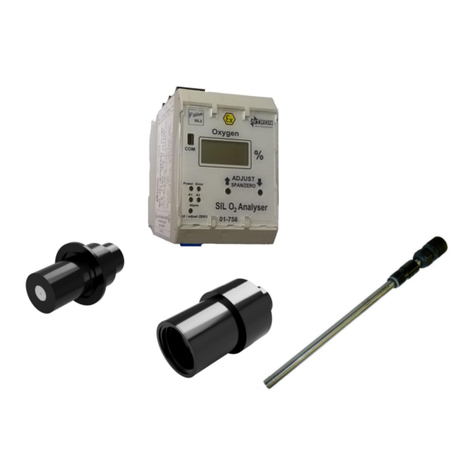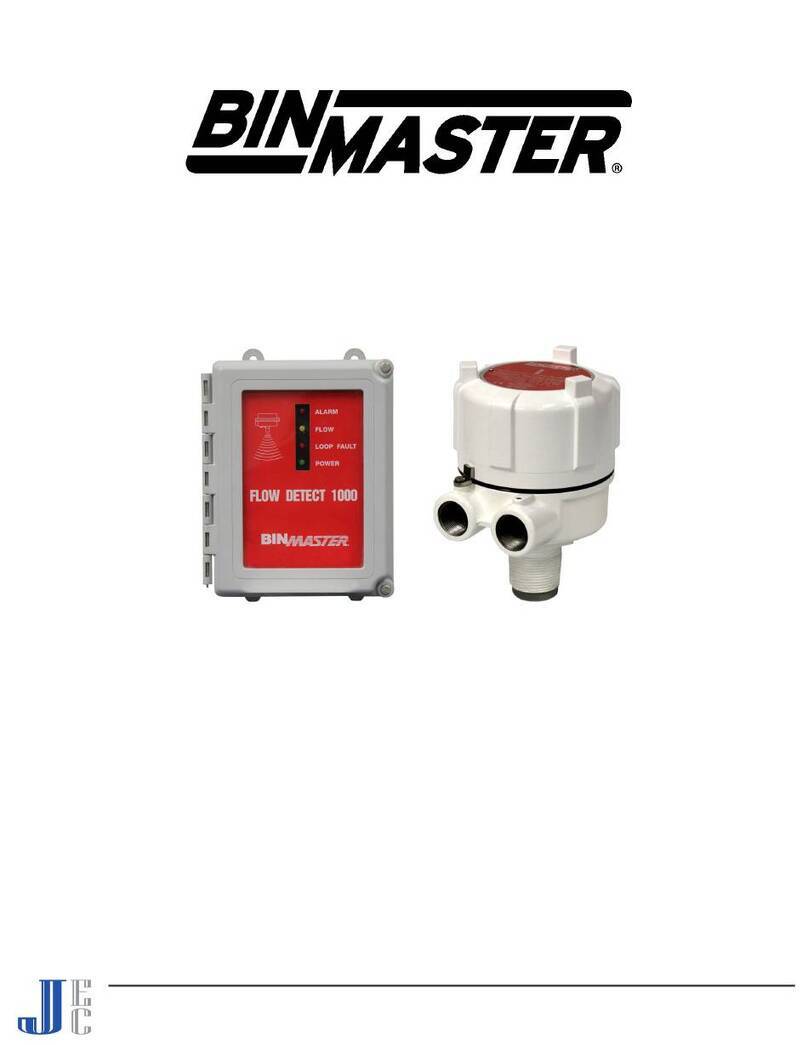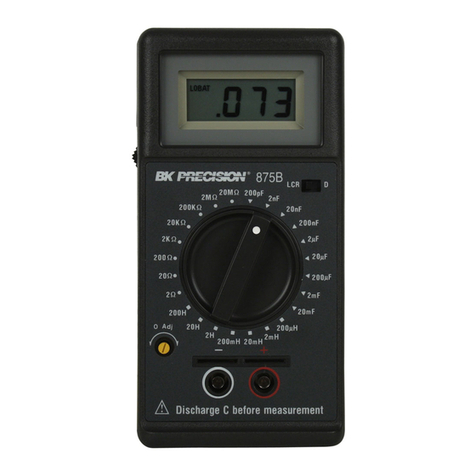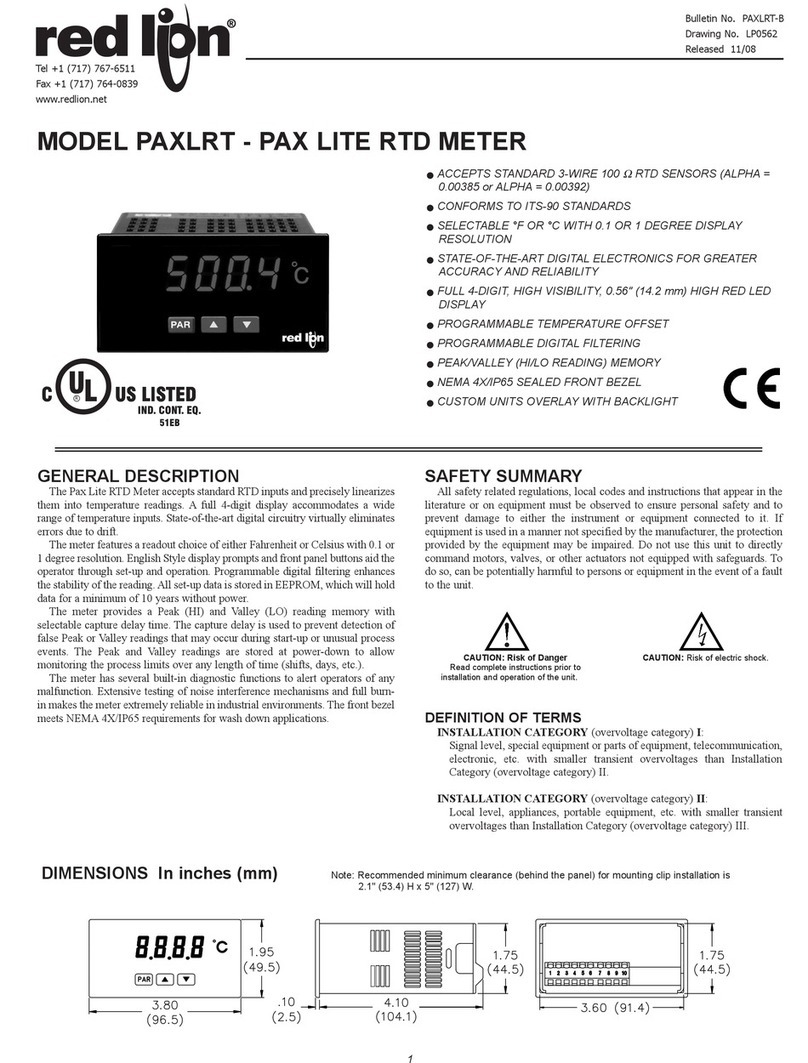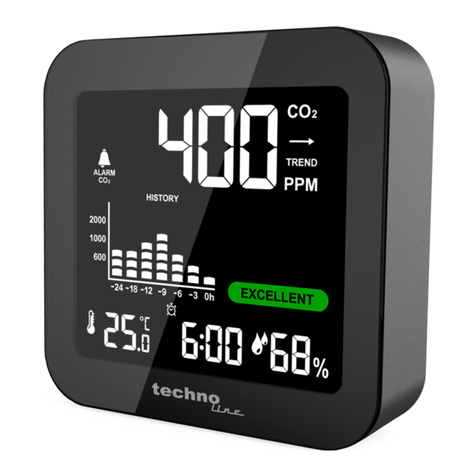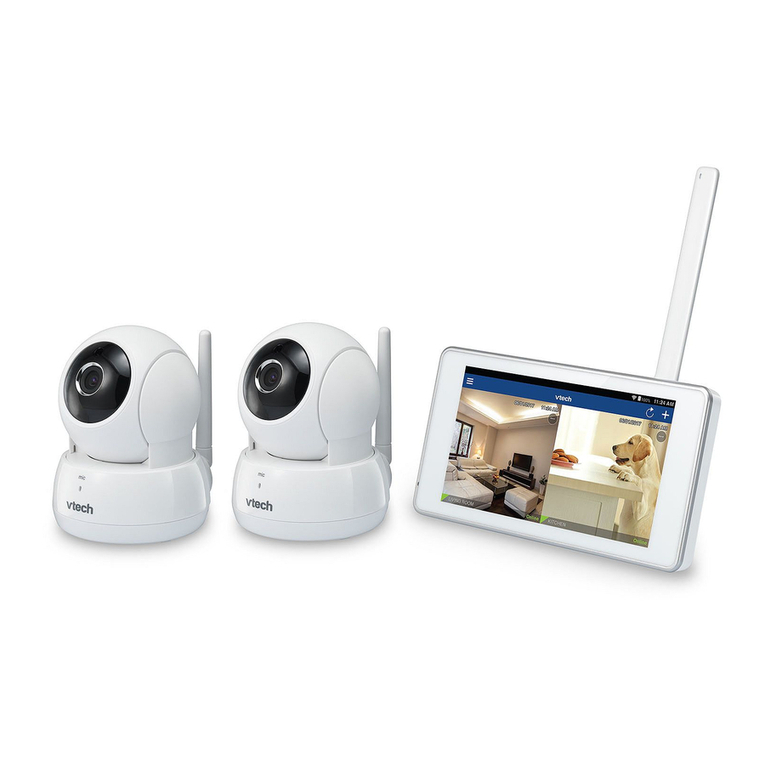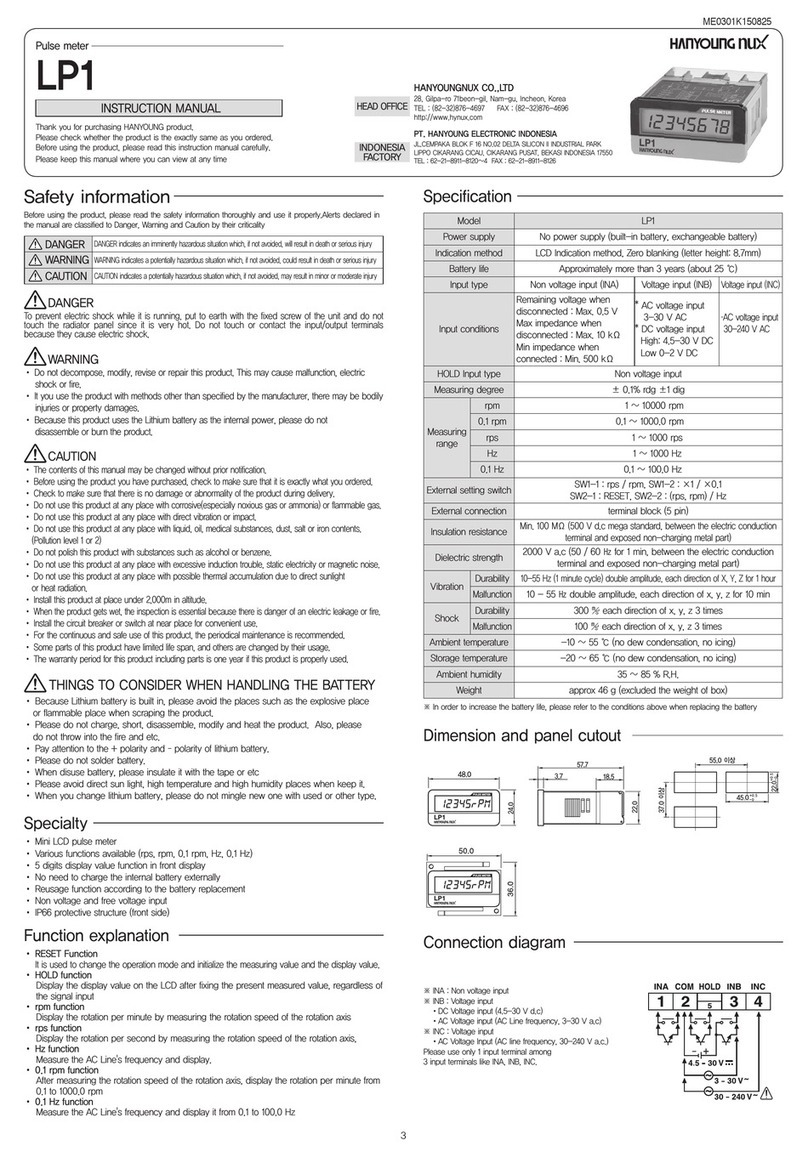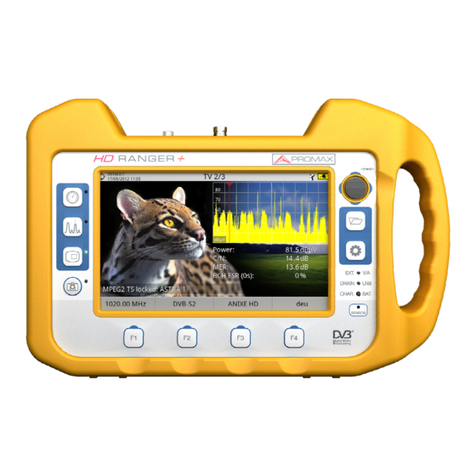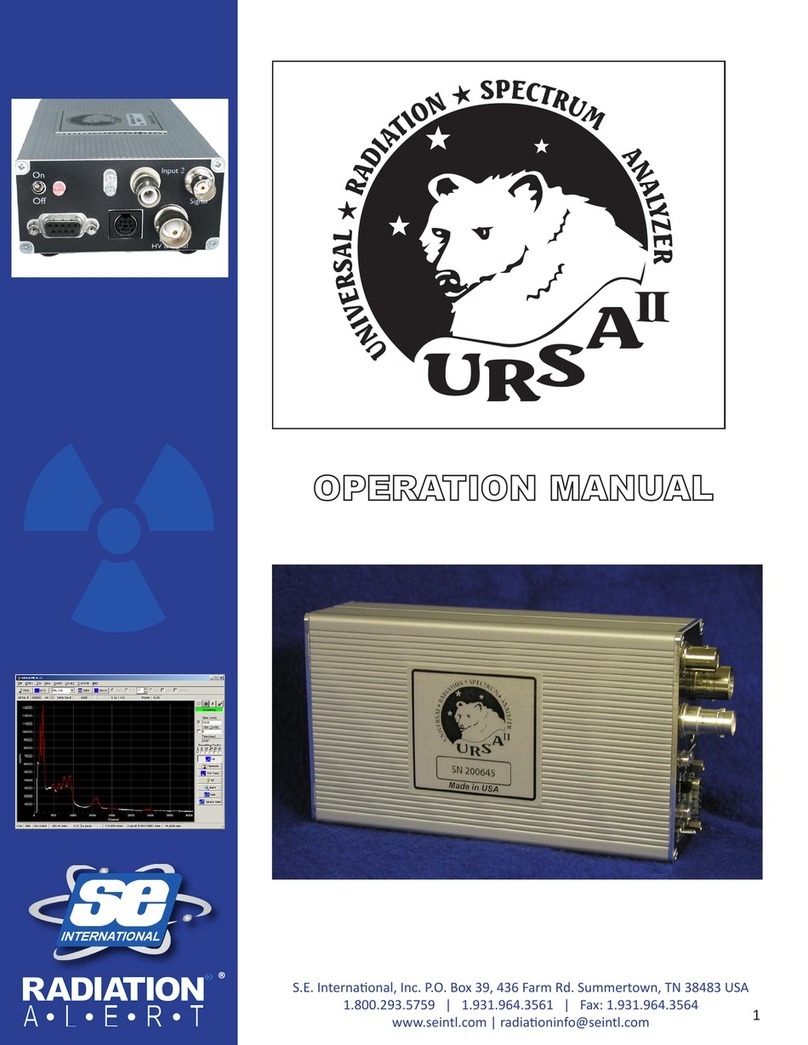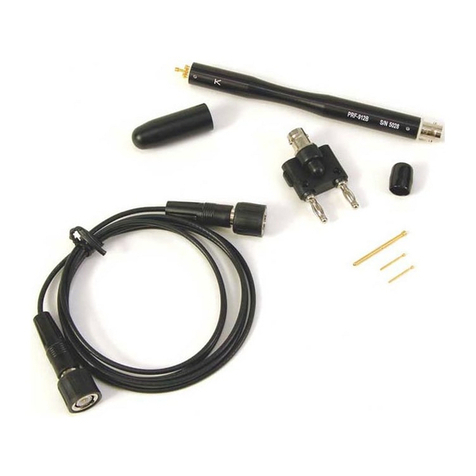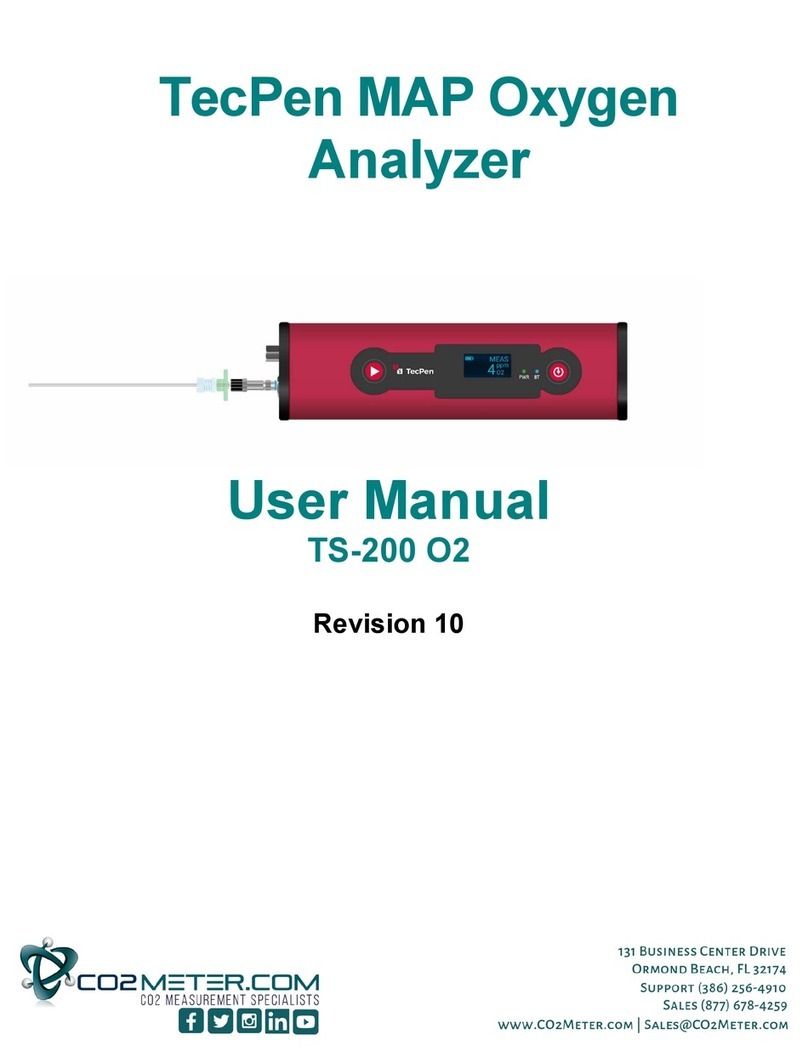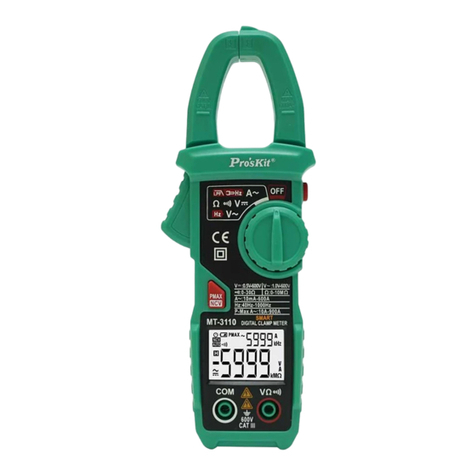FOBO Tire User manual

1 | P a g e
FOBO Tire
User Manual
Version 1.1
(for iOS7.1 and Android 4.30 & above)

2 | P a g e
Contents
1Introduction
2About FOBO Tire
3Importance of tire care
4Description of FOBO Tire
4.1 In-Car unit
4.2 Tire Sensor unit
4.3 Sensor lock nuts & wrench
5Start to use FOBO Tire
5.1 Installing FOBO Tire app
5.2 Installing FOBO Tire In-car unit and sensors
5.3 Setting up multiple users
5.4 Tire rotation
5.5 Disable sensor and Replace new sensor
5.6 Transfer FOBO Tire to another user
6FOBO Tire Alert Messages
7In-Car unit audio & LED alerts
8Replacing Battery
9Trouble Shooting Guide
10 FOBO Tire Specifications
11 Warning
12 Regulatory Information
13 Intellectual Properties
14 Limited Warranty and Disclaimer

3 | P a g e
1Introduction
FOBO Tire is the world’s most advanced Tire Pressure Monitoring System (TPMS) using
Bluetooth Smart (Bluetooth 4.0) technology to monitor your car tire pressure and
temperature. Bluetooth Smart is a very low power wireless technology that could operate
on a single coin cell battery for up to two years (NOTE: Battery life may vary
according to usage and climatic temperature. Operating under extreme cold may
drastically reduce battery life.)
Please ensure that your smart phone has Bluetooth Smart Ready (Bluetooth 4.0)
capability in order to use FOBO Tire. Currently FOBO Tire works best with iOS7.1 and
Android 4.30 and above.
Before starting to use FOBO Tire, please download the free FOBO Tire app to your smart
phone from Google PlayStore or Apple AppStore.
FOBO Tire is a product designed and produced by Salutica Allied Solutions Sdn. Bhd.
(“Salutica”), a Malaysian company with its address at No. 3, Jalan Zarib 6, Kawasan
Perindustrian Zarib, 31500 Lahat, Ipoh, Perak, Malaysia.
2About FOBO Tire
FOBO Tire monitors your car tires non-stop around the clock. Most drivers have
encountered situations where they need to rush for an urgent appointment only to be
halted by a flat tire. Conventional Tire Pressure Monitoring Systems (TPMS) could not
pre-alert you because they stop operating as soon as the car ignition is switched-off. With
FOBO Tire, you will get an alert as soon as the tire pressure drops below a certain pre-set
level, even when the car ignition is switched off. You will be alerted if you are within
Bluetooth range (~30m). This pre-alert gives you time to get the flat tire fixed before you
need to use the car for next appointment.
FOBO Tire can monitor up to 20 cars on each smart phone. This gives the user full
information of the tires for all the cars without switching on. You will know which car
tire is under-inflated without having to start the car engines one by one. NOTE: Under
certain conditions the signals from FOBO Tire sensors may be blocked by
surrounding objects or structures. If this occurs, please move around the vehicle in
order to capture signals from all the tire sensors.

4 | P a g e
For those who are sharing car with family members or friends, you can allow others to
use your FOBO Tire with permission. And it is simple, just key in the e-mail address that
the other user will be using to login to FOBO Tire app.
FOBO Tire consists of four sensors and one in-car unit. Replace your tire valve caps with
the sensors and place the in-car unit inside the car. The sensors will measure tire pressure
of each tire and transmit via Bluetooth to the in-car unit. In case of any problem, the in-
car unit will produce alert sound to notify user of any problem. In-car unit also comes
with LEDs to show position of the problematic tire.
FOBO Tire system requires a smart phone and app for installation. Besides being able to
view more information of your car tires, the smart phone app will also produce alert
sound when your tire has a problem.
DISCLAIMER: FOBO TIRE IS NOT AN ANTI-ACCIDENT DEVICE AND IT IS
NOT A SUBSTITUTE FOR SAFE TIRE MAINTENANCE PRACTICES. PLEASE
CONTINUE TO TAKE PRECAUTIONARY MEASURES WHILE DRIVING AND
TAKE FULL RESPONSIBILITY OF YOUR VEHICLE’S TIRE CONDITION TO
ENSURE SAFETY WHILE DRIVING. YOU SHOULD CONTINUE TO
PRACTICE PROPER TIRE CARE AND SCHEDULED TIRE MAINTENANCE.

5 | P a g e
3Importance of tire care
It is extremely important to ensure car tires are properly inflated for safety while driving.
However, most drivers tend to neglect proper tire care and maintenance. Car tires are the
only contact holding the car to the road. The air pressure inside the tires is supporting the
weight of the car and passenger loads. Improperly inflated car tires may cause serious
accidents on the road.
When the car tires are underinflated, the full weight of the car may compress and distort
the tire side walls. Continued use of underinflated tires may lead to heat build-up and
cause de-lamination of the tire materials thus increasing chances of tire blow-out.
Underinflated tires will also wear faster around the tire shoulders causing uneven tire
wear. Gas mileage will reduce due to more drag when driving with underinflated tires.
For some drivers, they tend to overinflate their car tires to get better mileage. However an
overinflated car tire tends to bulge at the center radial causing uneven wear. Water
dispersion may also be affected when tires are overinflated increasing chances of
hydroplaning. That’s when the car may spin out of control when driving on wet road.
What is the optimum tire pressure? There are a lot of information about this subject in
internet forums and web articles. A quick guide for better understanding of tire pressure
below:
1) Car manufacturers recommend the optimum tire pressure for their car models.
The information is usually available on a sticker at the door jam (side of the
driver’s door) or in the owner’s manual. For some car models, the information
sticker may be on the trunk lid or on the fuel door. Car manufacturers usually
recommend different tire pressure for front and rear tires. This pressure is usually
recommended for comfort driving and optimum performance of the car. It is not
advisable to go below this recommended pressure level.
2) The car manufacturer recommended tire pressure is “cold pressure”. When you
drive your car to the gas station, the friction on the road will heat up your car tires
within a few minutes. Typically there will be 1psi (7kPa) increase in air pressure
for every 10oC (50oF) increase in tire temperature. It is advisable to inflate the tire
pressure with this compensated pressure above the recommended pressure.
3) Air pressure is a direct function of temperature. Check and adjust your tire
pressure whenever there is a drastic change in environment temperature, eg.
change of season.
4) Tires will deflate over time by itself even without any puncture. Usually the air
leak mostly comes from the tire valves. Change the tire valves or at least check
the valves condition every time you change a new set of tires. Under normal
condition, a set of tires could deflate at a rate of up to 2psi per month. It is good
practice to check your tire pressure regularly and top up to the optimum pressure.
5) Every car tire has a recommended maximum load pressure. You should not use
your car tire at this pressure. It is dangerous to inflate your car tire to the
maximum load pressure.

6 | P a g e
4Description of FOBO Tire
4.1 In-Car Unit
Tire position indicators –To indicate which tire has problem
Side button - In normal condition: Short press side button to check
status of In-Car unit whether it is sleeping or in
operational mode.
During tire alert: When there is a tire alert, short press
side button to silent the alert. After silencing the alert, a
short press again will reproduce the tire alert once.
Synchronizing with smartphone: Long press the side
button to sync user settings with the smartphone. Similar
long press is also used during releasing of In-Car unit and
pairing the unit.
Front Left Tire
Indicator
Rear Left Tire
Indicator
Front Right
Tire Indicator
Rear Right
Tire Indicator
Status Indicator
Side Button

7 | P a g e
NOTE: Excessive frequent pressing on the side button will drain the In-Car unit
battery.
Status indicator - LED will blink to show Bluetooth pairing mode or battery
low status
Alert buzzer - buzzer to alert when there is problem with tire
AA batteries - In car unit operates with two AA size batteries. The
batteries will work for up to two years.
FOBO Tire In-Car unit is a complicated device that performs many functions. Due to
shielding effect of the car body metal, some drivers may face difficulty to get sensor
signals to their smartphone when sitting inside the car. This problem may be further
aggravated when driver places the smartphone close to the body, in trouser pocket or
waist pouch. The In-Car unit is designed with an efficient antenna that can pick up sensor
signals up to 10dB better than a usual smartphone. With the In-Car unit, user can be
assured of good signal reception from the sensors.
The In-Car unit is designed to be placed anywhere inside the car, please do not remove
from inside the car. FOBO Tire system requires the In-Car unit to remain inside the car in
order to be fully functional as a system. Note that In-Car unit is not water-proof. Best
location to place the In-Car unit will be to affix it on the lower dashboard position but
away from direct sunlight. Use the Velcro double side tape provided in the packaging to
secure the In-Car unit. Do not enclose the In-Car unit inside any metal compartment or
box. This will make the In-Car unit unable to receive signals from tire sensors.
The In-Car unit will also synchronize all user settings changed on the smartphone every
time it wakes up. For any changed settings in the app, it will only be synchronized in the
next In-Car unit wake up cycle. Alternatively you can long press the side button of In-Car
unit until you hear a beep, in order to put the In-Car unit into synchronization mode with
the smartphone app. Note that the In-Car unit will go into sleep if the car is not moving
for a long time. This is to conserve the battery life of In-Car unit. However the sensors
will continue operational for 24x7 and alert user in case of flat tire when user is away
from the car.
The In-Car unit is also meant to be a back-up alert device in case user did not bring
smartphone into the car or the smartphone is set to silent mode. When there is a tire
problem, the In-Car unit will produce audio and visual LED alerts to inform user of a tire
problem. To silent the repetitive audio alerts, short press the side button once. In case
user wants to reproduce the alert to check the location of problematic tire, short press the
side button once more.
In-Car unit will produce a start-up tone “di da” every time it wakes up after detecting a
car movement. This tone is also to inform the user or driver that In-Car unit is operational.

8 | P a g e
In case user does not hear this tone when start moving the car, please check the state of
the In-Car unit by short pressing the side button once. If you hear “daaaa” tone that
means the In-Car is in sleep mode unable to wake up. You can change the detection
sensitivity in the Car Setting -> Advance Setting screen to trigger the In-Car wake-up.
This may happen to some electric cars where In-Car unit may require higher sensitivity to
detect car moving.
NOTE: Unnecessarily waking up the In-Car unit will drain battery.

9 | P a g e
4.2 Tire Sensor Unit
Knob cover –waterproof cover. Please ensure the red silicon ring is
intact to prevent water from getting into electronics
compartment.
Single internal battery - CR2032 coin cell battery. When replacing battery, please
ensure “+” of the battery facing top, away from PCB.
Internal PCB - internal electronics circuit
FOBO Tire sensor units are designed to be robust and working reliably 24x7 to provide
tire information. It is designed to be water proof (IP57) and using special engineering
plastics, will be able to withstand road salts or other common automotive chemicals
(petrol, engine oil, car wash shampoo, etc).
Extreme care had been exercised when designing the mechanical sealing to prevent air
leak. There is no need to screw in the sensor extremely tight. Apply a reasonable hand
twist force to ensure the sensor is securely installed and should be able to be removed by
hand with ease.
Note that the sensor position is fixed during installation. This is to ensure the app and In-
Car unit able to identify problematic tire position. If the sensor position is mixed up, you
can do a Rotating Tire procedure from the app to identify the sensor positions again.
A missing sensor or damaged sensor can be replaced easily using the replacing sensor
procedure. In the app screen, click on the tire position that needs to be replaced for 5
seconds. An instruction message will guide you to install the new sensor. Individual
replacement sensor is available for purchase from www.my-fobo.com.

10 | P a g e
4.3 Sensor Lock nuts and wrench
FOBO Tire sensors and In-car unit are tied to a FOBO account after installation. They are
not re-usable or transferable without the owner releasing them from his/her FOBO
account. This is a theft deterrent feature to discourage theft.
As an additional anti-theft feature, all FOBO Tire package comes with lock-nuts and
special wrench. Note that it is not necessary to use the lock nuts if user values
convenience as higher priority than worrying about sensors being stolen. Not using the
lock nuts will not affect functionality of FOBO Tire.
The lock nuts and wrench are made of special engineering plastics that can withstand
road salts and common automotive chemicals (gasoline, engine oil, car wash shampoo,
etc).
In order to use the lock nuts, first install the lock nut to the tire valve (with the bump
facing tire rim). Screw in all the way down to make way for the sensor unit. Next, screw
in the sensor unit until it is reasonably tight. Then use your finger to unscrew the lock nut
upwards until it pushes against the bottom of the sensor unit. Use the wrench to tighten
the lock nut. The resultant friction force will make it difficult to remove the sensor unit
without loosening the lock nut. For rubber valves, hold the sensor unit with one hand and
tighten the lock nut with the wrench on another hand. This to avoid the rubber valve from
twisting making it unable to tighten the lock nut.
WARNING: Do not apply too much force to tighten the lock-nut. You may face
difficulty to loosen the lock nut later on.
Use the key chain provided to keep the wrench together with your car keys, so that you
don’t have to worry about misplaced wrench when you need to remove the sensors when
adding air to your tires.

11 | P a g e
Steps to use FOBO Tire Lock Nut and wrench

12 | P a g e
5Start to use FOBO Tire
5.1 Installing FOBO Tire app
You are required to have smart phone with Bluetooth 4.0 (Bluetooth Smart)
capability in order to use FOBO Tire. Follow the steps below to install your FOBO
Tire:
Step 1: Download FOBO Tire app to your smart phone
For iPhone users, download from AppStore. For Android users, download
from GooglePlay. Search for “FOBO Tire”.
Step 2: Launch FOBO Tire app & sign up a new user account
Sign up a new account with a valid e-mail address
NOTE: By submitting your information to sign up a new user account, you
acknowledge your acceptance to the terms and conditions of our Software
Licensing Agreement and Privacy Policy.
Please read the Software Licensing Agreement and Privacy Policy carefully
before proceeding.
A verification e-mail message will be sent to your e-mail address.
If you do not receive the verification e-mail from FOBO Admin, please
check your e-mail address entry to ensure it is valid without typo error. It
may end up in the wrong e-mail address.
This e-mail may also be filtered by some e-mail servers. Please check the
Spam mailbox.
Please sign up again if you still did not receive any message from FOBO
Admin. Upon successful verification, proceed to Login.

13 | P a g e
5.2 Installing FOBO Tire In-car unit & sensors
NOTE: DO NOT INSTALL THE SENSORS TO THE CAR TIRE VALVES
UNTIL INSTRUCTED BY THE FOBO TIRE APP INSTRUCTION
NOTE: INSTALLING FOBO TIRE SETS ON MORE THAN ONE CAR
WHICH ARE PARKED CLOSELY TOGETHER MAY CAUSE CROSS
INTERFERENCE TO THE BLUETOOTH SIGNALS. PLEASE INSTALL
FOBO TIRE ON ONE CAR AT A TIME.
Remove the battery tab from In-car unit battery compartment before proceeding for
installation. In-car unit will be powered on immediately as soon as the battery tab is
removed. Follow the below steps from the FOBO Tire app:
1) Click “+” on the app HOME screen to add a car to your profile.
2) Key in the name you would like to identify your car with and take the picture.
3) Select the car manufacturer recommended pressure for both front and rear tires.
The information is usually available on a sticker at the door jam (side of the
driver’s door) or in the owner’s manual. For some car models, the information
sticker may be on the trunk lid or on the fuel door. The app will not work
without this information.
4) Click “Done” on the top right hand corner of the screen.
5) Next, you will be prompted to install the tire sensors. Screw in the FOBO Tire
sensor to your Front-Right tire. Make sure your smart phone is nearby or
touching the sensor to detect signal from the sensor unit. Repeat with Rear-
Right, Rear-Left and Front-Left tires. You will be prompted that installation is
completed and you are now ready to use FOBO Tire.

14 | P a g e
5.3 Setting up multiple users
FOBO Tire is easy to share with your family members and friends. You can share
FOBO Tire with up to 100 users. All that is required is to key in the other user’s e-
mail address in the FOBO Tire app Setting screen. Please ensure good internet
connection for FOBO Tire app to connect to the cloud.
The other user will just have to download FOBO Tire app and login using the above
e-mail address. And they are now ready to use your FOBO Tire.
Note that shared users will not be able to change settings (name, user limits, etc) on
your FOBO Tire set. They can only view the readings and get tire alerts.

15 | P a g e
5.4 Tire rotation
It is good practice to rotate your tire positions regularly to balance the thread wear
of your tires. Once tire position is changed, please select Tire Rotation in car status
screen. You will be guided by the app to:
1) move to the front right tire of your car
2) place your phone close to the sensor and hold for 15 seconds. For faster
response, you can also unscrew the sensor fully from the tire and screw it
back.
3) repeat step 1 & 2 for rear right, rear left and front left tires.
4) Tire rotation is complete
You are now ready to use FOBO Tire with the new tire positions. You can perform
tire rotation as often as you want.
5.5 Disable sensor and Replace new sensor
You may want to disable a sensor due to sensor missing or sensor damaged.
Disabling sensor will remove future missing sensor alerts. To disable sensor, long
press for 5 seconds on the box corresponding to the tire position you want to disable.
Click OK on the message box to disable the sensor. You will see “Disabled” inside
the box corresponding to the disabled tire position. Take note that FOBO Tire will
stop monitoring tire for a disabled sensor position.
In case the lost sensor is found or you have purchased a new replacement sensor,
you may want to install onto the “Disabled” tire position. Note that you can only
install replacement sensor after the tire position has been “Disabled”. To install
replacement sensor, long press for 5 seconds on the box corresponding to the
“Disabled” tire position. You will get a message prompting you to screw in the
sensor to the indicated tire position. Click OK on the message box to begin
installation procedure. Once the sensor is paired, you will get tire pressure reading
on the screen.
5.6 Transfer FOBO Tire to another user
Before passing on your FOBO Tire set to another user, you will have to release the
In-Car unit from your login account. Select “Release In-Car unit” in car setting screen.
Make sure your In-Car unit is with you. You will be prompted with a message to
press and hold the button at the side of In-Car unit until you hear a “Beep” sound and
the car profile from your “Home” page is erased. Your FOBO Tire set is now
available for the other user to pair and use.

16 | P a g e
In case you do not hear a “Beep” after more than one minute, you may remove the
batteries from back of In-Car unit and re-sit the batteries to reset the unit. Then select
“Release In-Car unit” and repeat the procedure in above paragraph.

17 | P a g e
7FOBO Tire Alert Messages
You will get the below alert messages on your smart phone during operation of
FOBO Tire under different conditions. The In Car unit will also generate different
alert tones to inform the urgency. When you get continuous non-stop two-tone alert,
please find a safe location to stop your car and check the alert messages on the smart
phone.
7.1 Pressure too low
You will get this alert when tire pressure drops below 15% from recommended
pressure. NOTE: IT IS DANGEROUS TO DRIVE WITH LOW TIRE
PRESSURE. THE FULL WEIGHT OF THE CAR AND PASSENGER
LOAD WILL BE COMPRESSING THE TIRE WALLS AND MAY CAUSE
TIRE FAILURE LEADING TO ACCIDENTS, INJURY OR DEATH.
7.2 Pressure too high
This alert will happen when tire pressure increases above 35% from your car tire
recommended pressure or when pressure touches the 350kPa (3.5bar/51psi). It is
not advisable to drive at high tire pressure for too long. It will cause excessive
uneven wear to the tire thread.
7.3 Temperature too high
FOBO Tire will alert when the temperature detected exceeds 60oC/140oF. Note
that the temperature inside the tire may be higher than the temperature detected by
FOBO Tire sensors due to the air cooling effect on the tire valve when the car is
moving. It is extremely dangerous to drive when you get this alert message.
WARNING: WHEN YOU SEE THIS ALERT, PLEASE STOP YOUR CAR
IMMEDIATELY AND CHECK THE TIRE!
7.4 Signal low or sensor missing
This alert happens when the In-car unit fails to communicate with the sensor. It
could be the sensor signal is blocked, sensor unit damaged or missing from the
tire. If confirmed the sensor is damaged or missing, you could disable the sensor
in order to continue using FOBO Tire with remaining working sensors. Please
purchase the sensor replacement immediately. It is not advisable to continue
driving without FOBO Tire actively monitoring one or more of your car tires.

18 | P a g e
7.5 Pressure below preset limit
This alert happens when the tire pressure drops below pre-set lower limit. The
recommended range for low limit is 8% below recommended pressure. You may
change this lower limit in the setting screen down to 15% below recommended
pressure. For fuel economy and optimum tire performance, it is recommended to
keep this range tight so that you get frequent reminder to re-inflate your car tires.
If you find the reminder is too frequent, you may want to check your tire for any
leakage. Note that drastic temperature drop may also cause tire pressure drop.
Please check your tire pressure and re-inflate during change of season.
7.6 Pressure above preset limit
This alert happens when the tire pressure increases above pre-set upper limit. The
recommended range for upper limit is 25% above recommended pressure. You
could change this upper limit up to 35% above recommended pressure. For
optimum tire performance and grip, you should not overinflate your car tires.
Note that the tire pressure will increase as the car tires heat up due to friction
while driving.
7.7 Sensor battery level low
When the sensor battery level drops to certain level, you will get this alert. Please
change the battery immediately after you get this alert. You will continue to get
this alert every time you start moving your car until the battery is changed.
7.8 In-car unit battery level low
This alert happens when the In-car unit battery reaches certain low level. Please
change the battery immediately after you get this alert. You will continue to get
this alert every time you start moving your car until the battery is changed.

19 | P a g e
8In-Car unit audio & LED alerts
In-Car unit will produce different tones and LED flashes for different situations. For
repetitive alerts, you can stop the alerts by pressing the In-Car unit side button once. In
case you have forgotten the location of the problematic tire, you can short press the side
button another time to re-produce the alert one time.
Wake up –unit will produce “di da” tone once with LED blinking sequentially for all
four tire indicators. This shows that In-Car unit is awake and operational.
Sleep –unit will produce “daaa” tone once. No LED blink. This shows In-Car unit is
going to sleep and not operational. In-Car unit goes to sleep to conserve battery when car
is not moving for a long time. However the sensors will still be operational 24x7 and
continue to monitor and alert to your handphone in case of flat tire.
Soft alert –unit will produce “di di di di di” tone once and repeat every 3 minutes. LED
will blink for 5 seconds on problematic tire. This alert is for non-emergency situation
such as:-
Tire pressure slightly exceed above or below user pre-set limits. It is not
dangerous to continue driving.
Sensor battery low. Once notified on low sensor battery, please remember
to change the battery at your convenience. Do not leave the unit to
continue operating under low battery for a long time.
In-car unit battery low. LED blink will be on the status LED, not on the
tire indicator LED. Once notified on low sensor battery, please remember
to change the battery at your convenience. Do not leave the unit to
continue operating under low battery for a long time.
Signal low or sensor missing. For this situation, the tone will repeat every
5 seconds instead of 3 minutes to inform user of a possible missing sensor.
Emergency alert –unit will produce “di da di da di da” tone once and repeat every 5
seconds. LED will continue to blink on problematic tire. This alert is for emergency
situation such as:-
Tire pressure is too high or too low. It is not recommended to continue
driving without investigating the condition of the tire. Please stop the car
at a safe location to check the condition of the tire.
Tire temperature is too hot, exceeding 60oC or 140oF. It is not
recommended to continue driving without investigating the condition of
the tire. Please stop the car at a safe location to check the condition of the
tire. Note that the measured temperature may be lower by 10oC or 50oF
compared to the in-tire air temperature when the car is moving, due to air
cooling effect on the tire valve.

20 | P a g e
NOTE: FOBO TIRE IS A MONITORING DEVICE TO ALERT THE USER
WHEN IT DETECTED SIGNALS THAT IS OUT OF PRE-SET CONDITIONS.
THE USER OR DRIVER IS SOLELY RESPONSIBLE TO FIND OUT THE
ACTUAL CONDITION OF THE TIRE. FOBO IS NOT RESPONSIBLE FOR
WRONG DIAGNOSTICS OR FALSE ALERTS THAT MAY CAUSE
INCONVENIENCE.
9Replacing Battery
The coin cell battery (CR2032) used in FOBO Tire sensors could last up to two years on
normal operation. Similarly the AA battery used in FOBO Tire In-car unit could last up
to two years on normal operation. Operating in extreme cold temperatures may reduce
battery operating life for both sensors and In-car unit.
You will get an alert on the smart phone and in-car unit when the sensor or In-car unit
battery goes below indicated level. You will be alerted every time you start to drive your
car until the battery is replaced. It is advisable to change the battery once you get this
battery alert to ensure proper performance of FOBO Tire. Do not wait until the battery is
fully drained as it will cause FOBO Tire to stop working especially when you need it.
To replace the battery of sensor unit, unscrew the top cover. Be careful not to damage the
rubber gasket as it may affect water resistance of the sensor unit. Ensure the battery
(CR2032) is inserted “+” side up facing away from the PCB.
To replace battery for the In-car unit, slide out the battery cover. Ensure the battery (AA)
is inserted in the correct orientation. It is advisable to use good quality AA batteries
(recommended Lithium or Alkaline) for longer lasting performance of In-car unit.
WARNING: RE-USING OLD BATTERIES OR MIXING OLD AND NEW
BATTERIES IN IN-CAR UNIT MAY DAMAGE THE ELECTRONICS.
Table of contents
Other FOBO Measuring Instrument manuals


